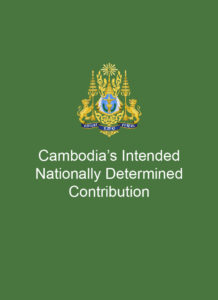Cambodia has developed several climate action regulations and mechanisms to help them achieve their NDC targets. The country is currently exploring the potential of carbon pricing mechanisms and other policies to reduce GHG in the transportation sector. Through the Climate Adaption, Cambodia has appointed the MME to roll-out the climate risk analysis on the existing electricity infrastructures and provide feedback besides climate proofing existing and future solar/hydro infrastructure.
Oil and traditional biomass become the dominant energy sources in TPES.
In 2021, primary coal imports for Cambodia were 2,854 thousand short tons. Before primary coal imports of Cambodia started to increase to reach a level of 2,854 thousand short tons in 2021, it went through a trough reaching a low of 0 thousand short tons in 2004 [1].
[1] Cambodia – Total Primary Coal Imports
Cambodia has their own Energy Tech Roadmap published in 2023 by Ministry of Industry, Science, Technology and Innovation. This roadmap acts as the country’s guide to the potential of energy transition, laying out strategic frameworks, through research and analysis in collaboration with different stakeholders to produce actionable recommendations. It is also designed to be adaptive towards the everchanging energy landscape.
| Topic | Title | Year | Issuing Ministry |
|---|---|---|---|
| National Strategic Development Plan (NSDP) 2019-2023 | 2019 | Minister of Planning | |
| Energy | Cambodia Climate Change Strategic Plan 2014-2023 (CCCSP) | 2013 | The National Council for Sustainable Development |
| Target related to RE | Cambodia’s Sustainable Development Goals (CSDGs) | 2018 | The National Council for Sustainable Development |
| Economic, Social Policy (part of paper is focusing on the energy) | Rectangular Strategy IV | 2018 | |
| Circular Economy and Action Plan | 2021 | The National Council for Sustainable Development |

Cambodia intends to undertake actions to reduce GHG emissions, the impact of which is expected to be a maximum reduction of 3,100 Gg CO2eq compared to baseline emissions of 11,600 Gg CO2eq by 2030.
Cambodia intends to undertake voluntary and conditional actions to achieve the target of increasing forest cover to 60% of the national land area by 2030. In absence of any actions, the net sequestration from LULUCF is expected to reduce to 7,897 GgCO2 in 2030 compared to the projected sequestration of 18,492 GgCO2 in 2010.
